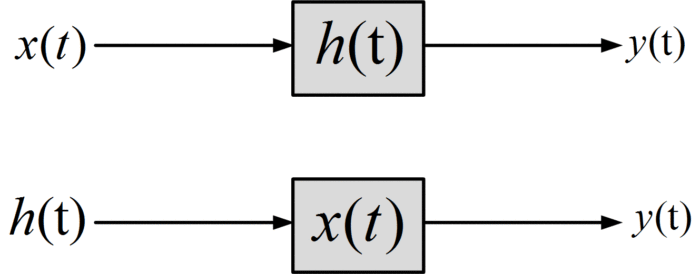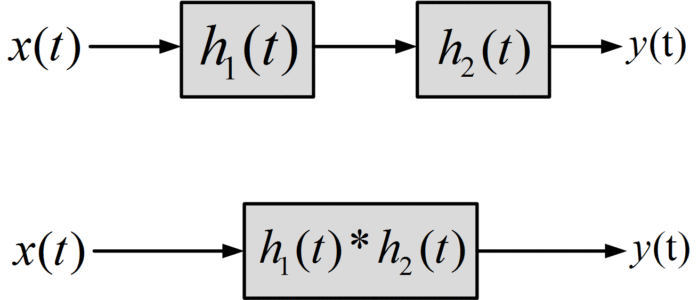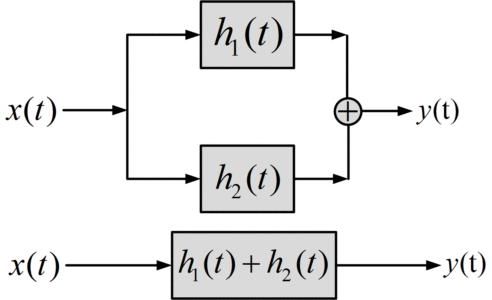Continuous Time Convolution
For linear time-invariant (LTI) systems, the convolution is being utilized in order to achieve output response from the knowledge of input and impulse response.
Given two continuous-time signals x(t) and h(t), the convolution is defined as
$y\left( t \right)=\sum\limits_{\tau =-\infty }^{\infty }{x\left( \tau \right)h\left( t-\tau \right)d\tau }~~~~~~~~~~~~~~~~~~~~~~~~\left( 1 \right)$
The integral defined in above equation is an important and fundamental equation in the study of the linear system; it is called the convolution integral. Because it is so often used, it has been given a special shorthand representation;
It should be noted that convolution integral exists when x(t) and h(t) are both zero for all integers t <0. If x(t) and h(t) are zero for all integers t<0, then x(?)=0 for all integers ?<0 and h(t-?) =0 for all integers t-?<0. Thus the integral on ? in equation (1) may be taken from ?=0 to ?=t, and the convolution operation is given by;
$x\left( t \right)*h\left( t \right)=\left\{ \begin{matrix} 0,~~~~~~~~~~~~~~~~~~~~~~~~~~~~~~~~~~~~~~~~t=-1,-2,\ldots \\ \underset{0}{\overset{t}{\mathop \int }}\,x\left( \tau \right)h\left( t-\tau\right)~~~~~~~~~~~~~~~~~~~~~~~~~~~~~~~~~~~~~~~~~~t=0,1,2,\ldots ~~~~~~~~~~\left( 2 \right)~~~~~~~ \\\end{matrix} \right.$
Since the integral in equation (2) is over the finite range of integers (?=0 to ?=t), the convolution integral exists. Hence, any two signals that are zero for all integers t<0 can be convolved.
Continuous-Time Convolution Properties
The convolution mapping possesses a number of important properties, among those are:
Commutative Property
If x(t) is a signal and h(t) and impulse response, then
An LTI system output with input x(t) and impulse response h (t) is same as an LTI system output with input h(t) and impulse response x(t).
Associative Property
If x(t) is a signal and h1(t) and h2(t) are impulse responses, then
The order of convolution is not important.
Distributive Property
If x(t) is signal and h1(t) and h2(t) are impulse responses, then
LTI systems parallel combination can be substituted with a single LTI system whose unit impulse response is the summation of the separate unit impulse responses in the parallel combination.
- You May Also Read: Continuous-Time Graphical Convolution Example



1 thought on “Continuous Time Convolution Properties | Continuous Time Signal”